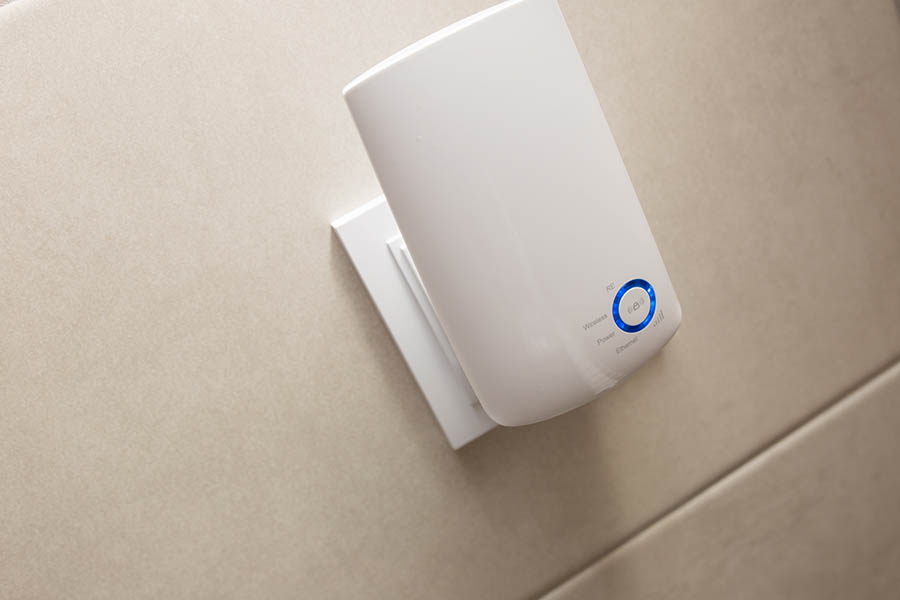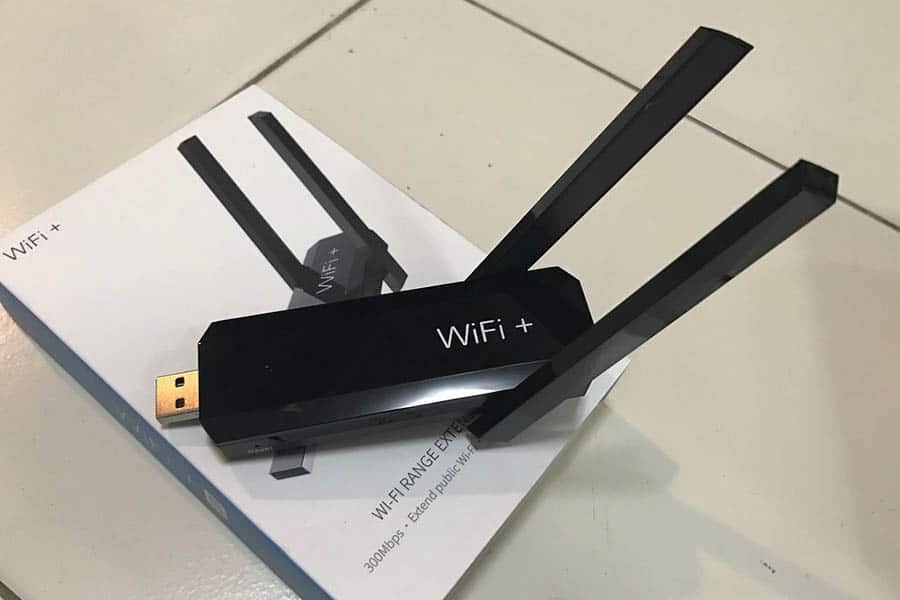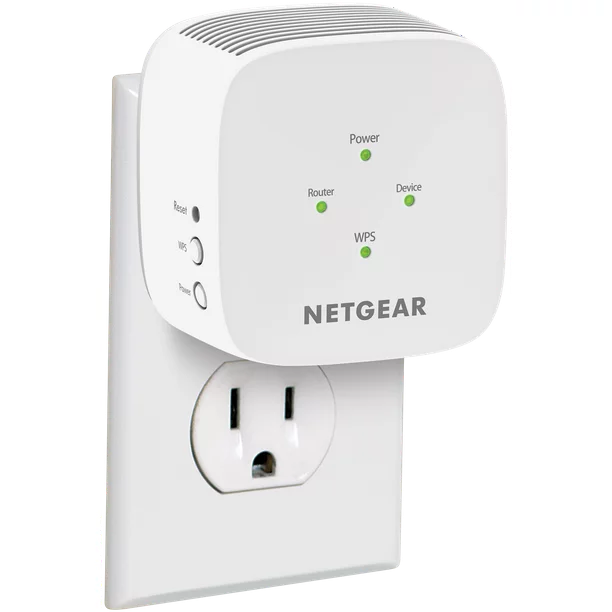One of the most common problems homeowners and businesses face after installing WiFi is ensuring that the network reaches all of the spots in their home or business. Sometimes, streaming media like movies and even playing video games is extremely difficult due to a lack of coverage. You can use a WiFi Booster or WiFi Extender if you’re having difficulties with your WiFi signal reaching all the corners. But the question remains, what to get – Wifi Extender vs Booster.
Wifi Extender vs WiFi Booster can be a confusing topic. Using this guide, you will be able to tell the difference between the two. Keep reading!
Wifi Extender vs Booster
As far as WiFi Boosters and WiFi Extenders are concerned, some people may mistake the two. To put it another way, a WiFi booster and a wifi extender are practically the same. There isn’t an obvious distinction between “boosters” and “extenders.” But still, to give you a precise understanding, we try to define them as clearly as possible.
What is WiFi Extender?
A WiFi extender is a device that makes it possible to increase the range of your wireless network. The WiFi extender picks up your existing network signal and is picked up by the WiFi extender, amplified, and then sent out again.

It’s possible to expand your WiFi network’s coverage area to include the distant corners of your house or workplace, the upper floors, or perhaps even the backyard with the help of a WiFi extender. An extender catches the wireless signal from your router/switch, amplifies it, and retransmits it. Using a wifi extender, you may expand the range of a network signal from the primary router to a new location.
What is WiFi Booster?
The term “WiFi booster” has been loosely used to refer to any device that helps enhance a WiFi signal’s range and strength. A WiFi booster is now more correctly referred to as a wireless range extender rather than a WiFi booster. A second network can be created using an established signal from a wireless router or wireless access point and rebroadcasting it through another device.

The usage of a wireless booster is necessary when two or more hosts need to be linked through the IEEE 802.11 protocol, but the distance between them is too great to construct a direct connection.
Also Read: Access Point vs Extender: What’s the difference?
WiFi Extender – Pros & Cons, Installation
The Wi-Fi signal from your home network can be rebroadcast using Wi-Fi extenders. When you manually move between Wi-Fi broadcasts, your devices will lose connectivity. There are many advantages and disadvantages linked to WiFi Extenders, and you must know them before making a decision. We break them down into a pros and cons list below.
WiFi Extender Pros
- An easy way to increase the range of your home/workplace Wi-Fi network
- Directly connects to a standard 110-volt wall socket to provide electricity
- WiFi Extenders are affordable
WiFi Extender Cons
- Once you’ve plugged in your extension, you must manually switch to its network
- Larger homes may not be able to benefit from this
- Configuration is a bit complex
How to setup WiFi Extender
We can’t cover every type of network hardware because they’re all unique. As long as you follow the directions that came with the extender, you’ll be fine. There are, however, two common ways to tackle the setup of any WiFi extender, and we explain them below:
Setting Up Your WiFi Extender Using PC/Laptop
Assuming you have the most recent version of your router that is centrally positioned and free of interruption, you will still be unable to access your email from any upstairs rooms unless you connect to your mobile network. This is not ideal if you are concerned about your phone bill. Well, it is time to put in the Wi-Fi extender and enhance WiFi coverage in your house.
You can easily set up your WiFi extender using this method. We’ll begin by having you write down your current Wi-Fi network’s SSID (name) and password. If you have different 2.4GHz and 5GHz networks, do the same for them as well.
For a connected connection, you’ll need a desktop computer or laptop equipped with an Ethernet cable, as well as the cable itself. (One was likely included in the package with your extension.) You’ll need to join the default Wi-Fi network that the extender broadcasts if your pc does not have an Ethernet port. This network will be different from the one that is currently in your house.
Always refer to the official manufacturer’s instructions while setting up a device because the specifics of each model number differ. If you don’t have a setup guide, the fundamentals of most Wi-Fi extender setup processes are pretty similar, especially when it comes to the long number strings that you must enter. Follow the steps below to set up your WiFi Extender.
How to install WiFi Extender
- Pick a good location exempt from the same types of barriers that might conflict with the signal transmitted by your router. Concrete walls, as opposed to wood or glass, present a greater challenge.
- Connect the extender to a functional ac power outlet in a position within your existing Wi-Fi coverage scope, and then turn it on.
- Connect the extender by connecting it to a nearby Laptop or pc. Use either an Ethernet cable to connect directly from the extender to your PC, a technique that the manufacturer frequently advises, or a wireless network commonly referred to as a Wi-Fi Extender, or that has the branding of the product’s maker to do this task.
- When successfully connected, open the local area network (LAN) properties on your laptop or PC. Click Start > Control Panel > View Network Status and Tasks > Manage Network Connections from the Windows Start menu. Select Properties from the context menu when you right-click Local Area Network. Then select Internet Protocol Version 4 from the context menu again.
- Verify the extender’s guidelines to be sure, but the standard IP address you need to provide in the relevant blank box is often 192.168.10.1, depending on the extender’s configuration. Furthermore, you’ll input the commonly used numeric strings for the subnet (255.255.255.0) and the default gateway in this section (192.168.10.1).
- In the address bar of a web browser, type http://192.168.10.1 to connect to the server. If you’re prompted to input a DNS server address, leave the entry blank until otherwise instructed. Try putting admin in both username and password fields if you are prompted to, or admin as username and password as the password for credentials. The Setup Wizard will appear when you log in successfully.
- Select Wireless Repeater Mode from the drop-down menu and then click Repeater – OneKey Setting. Click on the Wireless Network Selection button and then on the Refresh List button when it displays.
- Select the wireless network that is used by your primary router to connect the repeater to the router, and then click Next.
- The password for your Wi-Fi network should be entered in the Pre-Shared Key area if the network is secured when requested. Now, choose Apply, Reboot, and OK from the drop-down menu.
After you’ve completed your Wi-Fi extender installation, you’ll notice that your wireless signal has a greater range than it did before you started. Enjoy the simple joys of Instagramming in the guest bathroom as you wait for your room to be ready.
For example, you can also check out Netgear’s extender installation video below to get a clear idea:
WiFi Booster – Pros & Cons, Installation
Wi-Fi Boosters are intended to extend the range of your WiFi network in your house. There are a variety of WiFi boosters on the market, and each has its own set of advantages and disadvantages. Keep reading to learn about the pros and cons of each type to help you make a decision.
WiFi Booster Pros
- Enhanced WiFi signal coverage
- WiFi signal coverage for your house
- Affordable
- It’s much easier to set up only one device
- Traditional/regular routers are supported
WiFi Booster Cons
- Might reduce bandwidth since the signal is broadcasted on another network
- Manually switch your device to the new network
- With some routers, it may not work properly
- Large or multi-story residences may not benefit from this option
- Complex to configure, and several must be set up one at a time
Types of WiFi Boosters
Wireless WiFi boosters and wired WiFi boosters are the two types of WiFi boosters available on the market. The placement of your router and the areas where you require the strongest WiFi signal will help you choose the best wireless network.
Wireless WiFi Boosters
A wireless WiFi booster establishes a wireless connection to your current network. The process of linking a wireless device, such as a phone or tablet, to a wireless network is quite the same when installing a wireless WiFi booster.
Thanks to the setup buttons found on most of these devices, installing a wireless WiFi booster couldn’t be easier. The WiFi booster will instantly connect to your network when you hit the setup button, so you don’t have to input a lengthy WiFi password.

An ideal position for a wireless WiFi booster is when the router’s signal is detectable. To avoid interference, keep away from solid walls and equipment such as microwaves and cordless phones.
Wired WiFi Boosters
Wired WiFi boosters are the ideal option if you want to avoid slowness or interruptions in your connection. With a coax cable WiFi booster, you can increase your network coverage to regions where the connection is weak. By using a wired connection, all potential interference with a wireless WiFi booster is eliminated. With solid walls and other electrical gadgets in the way, this provides a robust connection.
A powerline WiFi booster is another sort of wired WiFi booster that uses your house or office’s electricity lines to re-broadcast your router’s wifi signal. A powerline WiFi booster can increase the weak WiFi signal by plugging it into the affected region’s electric socket.
How to set up WiFi Booster
Devices that extend WiFi coverage by increasing signal strength and range are called “WiFi boosters.” A WiFi booster is typically used to increase WiFi coverage in a limited area. It’s necessary to place the WiFi booster device between your router and the location where you need additional bandwidth. To ensure that the WiFi signal is correctly transmitted and received, ensure that the booster and router are close to one another.
It takes only a few minutes to set up a WiFi booster. A few minutes of work could have it ready to work quickly.
Plugging in the small adapter into a wall socket and connecting it to your WiFi router through a network connection is all you need to get going. Your WiFi Booster will automatically discover your existing WiFi network name and password if the ‘clone’ button on the small adapter is pressed.
Finally, you need to attach a bigger adapter to a power outlet near the device you want to boost the bandwidth on and connect it through WiFi or Ethernet cable.
Also Read: Best Wifi Booster [Full Guide 2021]
Wifi Booster vs Extender – Which do you need?
An easy and inexpensive option to improve your WiFi coverage is to use WiFi boosters (also known as WiFi network extenders). What if you aren’t sure? A WiFi booster or WiFi Extender can be used for various purposes. Below we give you the most common reasons that trigger you to get a device to amplify WiFi signals around your home or workplace.
Area With Dead Zones
There are places in your home when your WiFi signal is entirely absent, best described as “dead zones.” This might be due to various reasons, such as being out of range of the router or a structural element in your property blocking the signal. A WiFi network extender or WiFi booster can assist in expanding the coverage and minimizing dead zones in your home.
Areas With Slow WiFi
While it may be possible to get a decent WiFi signal up from the ground, the signal may be sluggish and inconvenient. Many homeowners are content to put up with these inconveniences and maneuver around the sluggish spots in their homes. Streaming video in the kitchen or Skype in the living area is not possible.
Install a WiFi booster instead of tolerating sluggish WiFi in some areas of your home. A quick and inexpensive performance increase will allow you to reconsider using various areas of your house.
Faster WiFi Required
You may use WiFi boosters and extenders in addition to filling up dead areas in your WiFi network to increase bandwidth and even introduce new functionalities. Rather than buying a new router, you can take advantage of faster WiFi connections, including 802.11ac, by introducing an additional booster or extension to your current network. With an 802.11ac WiFi booster, even if your router doesn’t support 802.11ac, you’ll be able to enjoy the best WiFi connections imaginable.
Furthermore, some WiFi boosters/extenders incorporate modern WiFi technology that improves the network’s performance, enabling it to manage more gadgets and traffic.
Large Homes
When it comes to square footage, statistics from the National Association of Home Builders show that since 1970, American houses have grown by more than double their original size. If you have a large home, it’s difficult for the average wireless router to reach all areas, mainly if additional elements like concrete in the home significantly decrease the signal. A WiFi booster or network extender may be necessary if your home is large enough to necessitate situating your router in the center of the house.
WiFi Needed Outside
In subsequent years, it’s only logical that we need to use WiFi in more areas, such as on the porch in our backyard or even out front. To avoid using up your mobile internet data when you’re outside, you may install a WiFi booster in the section of your home nearest to the open area where you want service.
Frequently Asked Questions
Now that we know about Wifi Extender vs Booster and how they work, let’s answer some related questions.
What is better a WiFi extender or repeater?
A WiFi Repeater redirects the signal to locations with less strong signals. Extending the network coverage area and creating a larger service area are the primary functions of a WiFi Extender. WiFi Signal Repeater is another name for it. The cost of a WiFi repeater is lower than that of a WiFi extender.
Does a WiFi extender slow down Internet speed?
Only use Wi-Fi range extender hardware that is the most recent version available. The outdated, single-band extenders can decelerate internet speeds when they seek to deliver a signal across long distances, so you must use a dual-band Wi-Fi extender.
Conclusion
There are several advantages and disadvantages to using a WiFi booster or extender. It means you should get a WiFi booster or an extender if your WiFi isn’t working properly. Which one you choose is entirely up to you and your particular network’s setup and requirements. If your network’s performance is deteriorating because of a poor WiFi connection, you should take steps to strengthen your WiFi signal.
We hope this guide gave you a clear view into the difference between Wifi Extender vs Booster. Let us know in the comments.